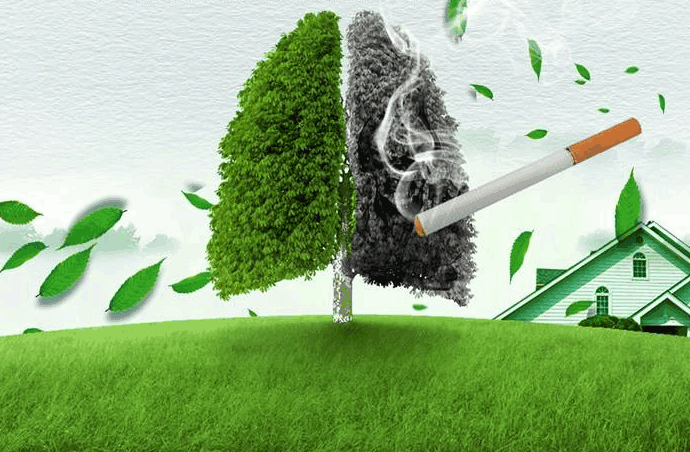Tobacco Increases Recurrent Aphthous Ulcer Size in Smokers
Introduction
Recurrent aphthous ulcers (RAUs), commonly known as canker sores, are painful, shallow lesions that develop in the oral mucosa. These ulcers affect approximately 20% of the general population and can significantly impair quality of life due to discomfort during eating, speaking, and oral hygiene maintenance. While the exact etiology of RAUs remains unclear, factors such as genetic predisposition, stress, nutritional deficiencies, and immune dysfunction have been implicated.
One controversial factor in RAU development and progression is tobacco use. Although some studies suggest that smoking may reduce ulcer frequency due to keratinization of the oral mucosa, emerging evidence indicates that tobacco exacerbates ulcer severity, particularly in terms of size and healing duration. This article explores the relationship between tobacco use and recurrent aphthous ulcer size in smokers, analyzing clinical findings and potential mechanisms.
Tobacco and Its Effects on Oral Mucosa
Tobacco contains numerous harmful chemicals, including nicotine, tar, and carcinogens, which alter the oral environment. Smoking induces vasoconstriction, reduces blood flow to oral tissues, and impairs immune responses, all of which may contribute to delayed wound healing. Additionally, tobacco smoke increases oxidative stress and inflammation, further aggravating mucosal damage.
1. Keratinization and Ulcer Formation
Some researchers argue that smoking leads to increased keratinization of the oral mucosa, which may theoretically reduce ulcer occurrence by providing a protective barrier. However, this keratinization does not prevent ulcer formation in all cases. Instead, when ulcers do develop, the altered mucosal environment may worsen their severity.
2. Impaired Healing Mechanisms
Nicotine, a primary component of tobacco, has been shown to delay wound healing by reducing fibroblast activity and collagen synthesis. In smokers, recurrent aphthous ulcers often take longer to heal and may grow larger due to compromised tissue repair mechanisms.
Clinical Evidence Linking Tobacco to Larger RAUs
Several clinical studies have investigated the impact of smoking on RAU size and severity:

- Study 1: A 2018 cross-sectional study published in Oral Diseases found that smokers with RAUs had significantly larger ulcer diameters (≥5 mm) compared to non-smokers (≤3 mm). The study attributed this difference to prolonged inflammation and reduced epithelial regeneration in smokers.
- Study 2: A 2020 longitudinal analysis in Journal of Oral Pathology & Medicine reported that smokers experienced more frequent and larger ulcers, with delayed healing times averaging 14 days compared to 7–10 days in non-smokers.
- Study 3: Research in Tobacco Induced Diseases (2021) highlighted that nicotine suppresses anti-inflammatory cytokines, exacerbating ulcer size and pain perception in smokers.
These findings suggest that while smoking may reduce ulcer frequency in some individuals, it worsens ulcer severity when they do occur.
Potential Mechanisms Behind Tobacco-Induced Ulcer Aggravation
1. Oxidative Stress and Free Radical Damage
Tobacco smoke generates reactive oxygen species (ROS), which damage mucosal cells and impair healing. Smokers exhibit higher levels of oxidative stress markers in saliva, which correlates with larger and more persistent ulcers.
2. Altered Immune Response
Smoking disrupts the balance of pro-inflammatory and anti-inflammatory cytokines. Elevated levels of tumor necrosis factor-alpha (TNF-α) and interleukin-6 (IL-6) have been observed in smokers with RAUs, contributing to prolonged inflammation and larger ulcer size.
3. Reduced Blood Flow and Hypoxia
Nicotine-induced vasoconstriction decreases blood supply to oral tissues, leading to hypoxia (oxygen deprivation). This impairs tissue repair and increases ulcer dimensions.
4. Microbiome Dysbiosis
Smoking alters the oral microbiome, promoting the growth of pathogenic bacteria that may exacerbate ulcer severity. Dysbiosis further complicates the healing process by sustaining chronic inflammation.
Management Strategies for Smokers with RAUs
Given the negative impact of tobacco on RAU severity, smokers experiencing recurrent ulcers should consider the following interventions:
- Smoking Cessation: Quitting smoking is the most effective way to reduce ulcer size and frequency. Nicotine replacement therapy (NRT) or behavioral counseling can aid cessation.
- Topical Analgesics and Anti-Inflammatories: Gels containing benzocaine or corticosteroids can alleviate pain and reduce inflammation.
- Antioxidant Supplementation: Vitamin C, vitamin E, and zinc may counteract oxidative stress and promote healing.
- Improved Oral Hygiene: Regular use of alcohol-free mouthwashes can help maintain a balanced oral microbiome.
Conclusion
While the relationship between tobacco and recurrent aphthous ulcers is complex, substantial evidence suggests that smoking exacerbates ulcer size and delays healing. The mechanisms involve oxidative stress, immune dysregulation, and impaired tissue repair. Smokers suffering from RAUs should seek cessation support and adopt targeted therapies to mitigate ulcer severity. Further research is needed to explore personalized treatment approaches for this high-risk group.
By understanding the detrimental effects of tobacco on oral mucosal health, healthcare providers can better educate patients and improve clinical outcomes for smokers with recurrent aphthous ulcers.
Tags: #RecurrentAphthousUlcers #TobaccoEffects #OralHealth #SmokingAndUlcers #WoundHealing #Dentistry #OralPathology











